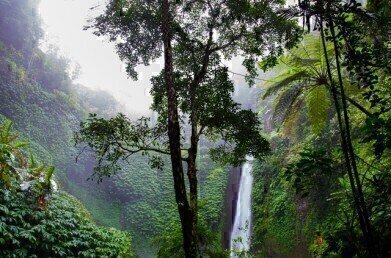Fuel for Thought
Ecuador Begins Drilling On the Edge of an Inhabited Rainforest
Apr 22 2016
Celebrated as one of the most biodiverse countries on the planet, Ecuador’s environmental credentials have just taken an alarming turn for the worst. It’s no secret that the nation is sitting on lucrative reserves of oil and gas, and now drilling has commenced on the edge of an untouched rainforest in Yasuni national park. State owned oil company PetroAmazonas is fronting the movement, with next generation equipment and promises that both social and environmental impacts will be negligent. Unsurprisingly, rainforest advocates argue otherwise…
Hunting, gathering and drilling for oil
Perched in Ecuador’s Amazon rainforest, Yasuni is home to two of the world’s last tribes living in voluntary isolation. The Ishpingo Tambococha Tiputini (ITT) block also sits on an estimated 920m barrels of crude. As a result, outside influence is creeping ever closer, with platform ‘Tiputini C’ now fully operational. Sources maintain that it’s the first of almost 200 wells that will begin to extract the crude that currently lies dormant.
Disruption by default
While the Ecuadorian government has banned oil companies from developing the ITT zone, critics warn that activity in the nearby Tiputini field could lead to pollution, forest destruction and the breakdown of traditional cultures and values within the nomadic Tagaeri and Taromenane tribes. Despite the fact that advanced directional and horizontal drilling methods will be used to tap into the ITT glut, environmental and cultural activists argue that impact will be unavoidable.
Yet despite opposition, minister Rafael Poveda has confirmed that oil flow will commence by the end of 2016. “We are optimising costs and increasing production areas with better prospects,” he said.
Resorting to desperate measures
Ecuador is no stranger to controversial crude, with debate surrounding the ITT block since 2007. The development of Rafael Correa’s Yasuni Initiative won global admiration, with the UN describing it as one of the “world’s most innovative conservation proposals.” Yet in 2013 Correa withdrew the plan, accusing the international community of failing Ecuador. Now, the government is claiming that exploiting the ITT is the only way to combat poverty and keep the nation afloat. There are restrictions in place, yet indigenous leaders and conservationists alike are fuming.
Leila Salazar-Lopez, Amazon Watch director comments, “By drilling Yasuní-ITT, the Ecuadorian government is threatening to destroy one of the most biodiverse and culturally fragile treasures on the planet for what amounts to about a week of global oil supply.”
In the Ecuadorian jungle, low ambient temperatures aren’t an issue. However in colder environments, harsh weather systems can call for the use of underground tanks. For more information on how to heighten functionality, ‘Optimising Level Measurement Performance in Underground Tank Installations’ explores how to overcome key issues of condensation, ice formation and low viscosity media.
Digital Edition
PIN 25.1 Feb/March
March 2024
In This Edition Safety - The technology behind the ION Science Tiger XT - Safety with ammonia and LOHCs as hydrogen carriers Analytical Instrumentation - Discussion on new tribology te...
View all digital editions
Events
Apr 22 2024 Hannover, Germany
Apr 22 2024 Marrakech, Morroco
Apr 22 2024 Muscat, Oman
Apr 22 2024 Rotterdam, Netherlands
Apr 23 2024 Singapore


















